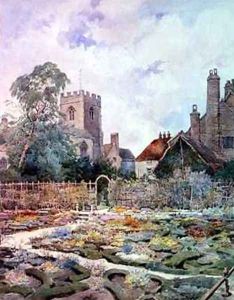D.A. Greatorex Paintings
Dora Wheeler Greatorex (usually known as D.A. Greatorex) was an American artist born in 1829. While specific details about her early life and artistic training are scarce, she is known to have become an active artist in the latter half of the 19th century. Her work primarily consisted of landscapes and cityscapes, in which she often depicted urban scenes of New York, as well as other locations she visited throughout her career. Greatorex was part of a generation of women artists who were beginning to gain recognition and opportunities in the art world, although they still faced significant barriers due to their gender.
Greatorex traveled extensively, which influenced her work significantly. She often sketched and painted scenes from her travels, and these works were well received in her time. Her travels took her across Europe, where she was inspired by the Old Masters, and to places like North Africa, which was a less common destination for artists of her period. Despite her travels, much of her work reflects her deep connection to New York City, where she was a part of the vibrant artistic community.
D.A. Greatorex was also known for her etchings and was a member of the New York Etching Club, which was a significant organization for artists working in this medium. Her works were exhibited in various venues, including the National Academy of Design. In addition to her own artistic practice, Greatorex was committed to the promotion of arts education, particularly for women. She was an advocate for the professionalization of art education and worked towards this end during her career.
Greatorex's contributions to the art world during a time when women were often marginalized cannot be overstated. She lived through a period of great change in the art world and society at large, and her works provide a window into the world of a woman artist in the 19th and early 20th centuries. D.A. Greatorex passed away in 1917, leaving behind a legacy of artistic achievement and a path forged for future generations of women artists.
